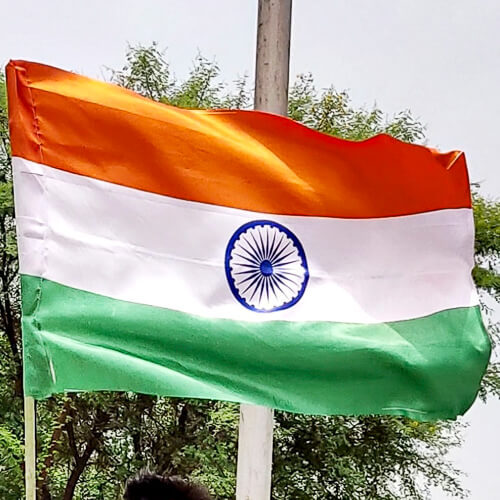It hardly ever happens that the industry gets so many of the items on its wishlist granted by the government in one go – but 2021 turned out nice.

It hardly ever happens that the industry gets so many of the items on its wishlist granted by the government in one go. 2021 was that year for the Indian telecommunications industry, when the administration announced a number of telecom measures that addressed the industry's long-standing demands.
Tell me what you want, what you really, really want
Santa visited India way before Christmas, when the government announced a series of reforms in September 2021. A key measure among them was the four-year moratorium on the pending adjusted gross revenue (AGR) dues.
Figure 1:  Flags are flying: 2021 may have started off with a whimper, but it turned out to be not such a bad year for India's service providers.
Flags are flying: 2021 may have started off with a whimper, but it turned out to be not such a bad year for India's service providers.
(Source: rahul jarwal on Unsplash)
Other measures included changes in the AGR definition, 100% foreign direct investment (FDI), spectrum sharing and a change in the right of way (RoW) rules.
More than anything else, the slew of telecom measures was seen as a sign that the government has finally started listening to the issues raised by telcos. As a result, all the telcos widely hailed the reforms.
After some delay, the government also announced a production-linked incentive (PLI) scheme to boost manufacturing in the country. Several global and domestic vendors, including Nokia, Ericsson, Dixon, HFCL and Tejas, have decided to benefit from it.
Raising the tariff
Another key reason for positivity in the Indian telecom industry is the tariff hike announced by all three major private telcos, Bharti Airtel, Reliance Jio and Vodafone Idea.
This was long overdue since the last tariff hike was in 2019. As of now, the 21 to 25% increase is only in the prepaid segment, but the telcos may hike tariffs in the postpaid segment as well.
This is a sign that operators are going beyond the competition and looking at improving profitability. Moreover, since this comes a few months before the 5G spectrum auction, it will also help the industry acquire funds and increase investment in network upgradation.
5G trial extension and 5G price
Another point of happiness for the Indian service providers was that they got a six-month extension for conducting 5G trials.
Want to know more? Sign up to get our dedicated newsletters direct to
your inbox
This ensures that they get one year to conduct 5G tests and would be able to quickly launch 5G services after the spectrum auction takes place in April-May 2022. Further, the indications are that the 5G spectrum price will be reduced by the DoT which will add to the telcos' happiness.
Related posts:
— Gagandeep Kaur, contributing editor, special to Light Reading
Read more about:
AsiaAbout the Author(s)
You May Also Like











